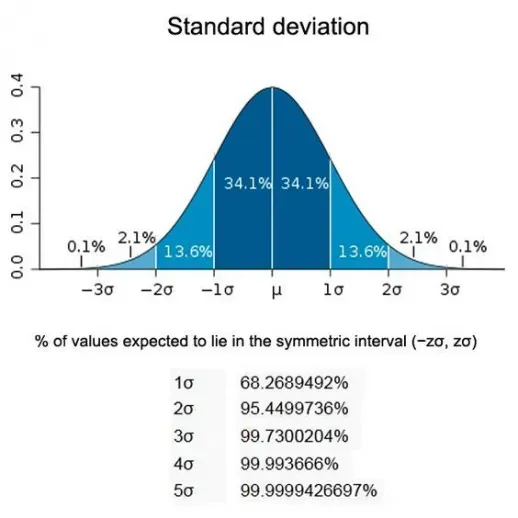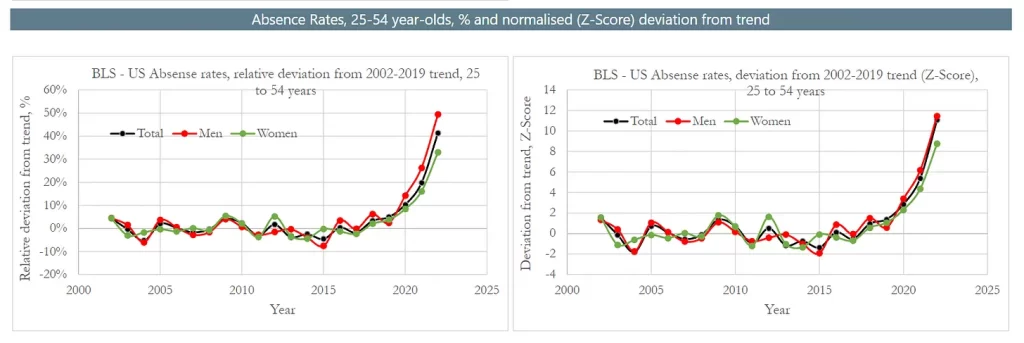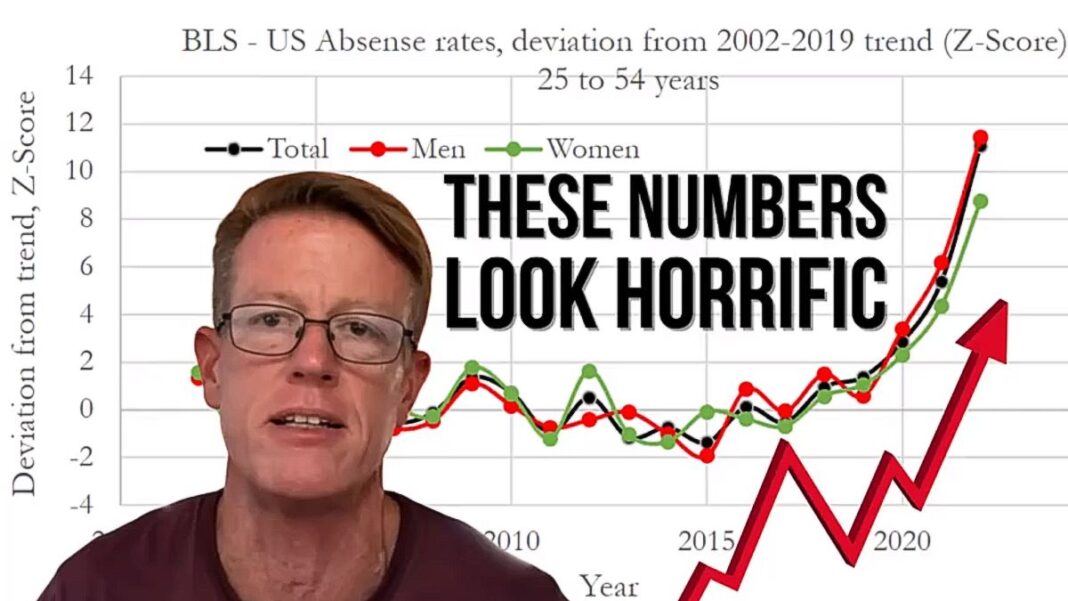“Something’s going on with our workforce that we’ve never seen before. And it’s gone so far above trend — it’s a health concern.”
The 2022 absence rate “makes absolutely no sense,” exclaimed former Blackrock portfolio manager Edward Dowd. “Something’s going on with our workforce that we’ve never seen before. And it’s gone so far above trend — it’s a health concern.”
“Absences are defined as instances when persons who usually work 35 or more hours a week worked less than 35 hours during the reference week for one of the following reasons: Own illness, injury, or medical problems; child-care problems; other family or personal obligations; civic or military duty; and maternity or paternity leave. Excluded are situations in which work was missed due to vacation or personal days, holiday, labor disputes, and other reasons. For multiple jobholders, absence data refer only to work missed at their main jobs. The absence rate is the ratio of workers with absences to total full-time wage and salary employment,” explained Mr. Dowd on his website.
He noted, “In relative terms, the deviation from trend in 2022, for the total (men+women) full-time workers was about 70%.”
“And that number [absence rates] went up three standard deviations off of trend (2003 to 2019)” in 2020, Mr. Dowd explained. In geek-speak, the chance of something three standard deviations above the mean is 0.3 percent.

Edward Dowd continues. “Three standard deviations is still a big deal. You could make the case for why that happened in 2020. There were lockdowns. There was confusion. People had to scramble with school and all sorts of things. So that makes sense to us. What doesn’t make sense is that in 2021 it persisted and went to five standard deviations. What makes absolutely no sense is the absence rate took off in 2022. And you can see the slope of the line; the rate of change accelerated to the upside in 2022. And that standard deviation was 11. That’s just off the charts!”







